Introduction
Sourcing high-quality enameled cast iron for your retail business can quickly become a costly mistake without proper strategy. Retailers often face challenges with inconsistent product quality, inflexible minimum order quantities, and hidden supply chain costs that eat into profit margins.
Finding reliable wholesale suppliers who offer the perfect balance of quality, customization options, and competitive pricing requires insider knowledge of the industry. From negotiating favorable MOQs to ensuring products meet safety certifications, every decision impacts your bottom line.
This comprehensive guide breaks down what successful retailers need to know when sourcing enameled cast iron cookware that will satisfy demanding customers while maximizing profitability.
The Wholesale Enameled Cast Iron Market: Overview and Supplier Landscape
The wholesale enameled cast iron market represents a significant opportunity for retailers looking to diversify their cookware offerings. This segment combines traditional cast iron durability with colorful, easy-to-maintain enamel coatings that appeal to modern consumers. Understanding this landscape is crucial for making informed sourcing decisions in a competitive retail environment.
“The global enameled cast iron wholesale market features diverse suppliers ranging from heritage European brands to emerging Asian manufacturers, each offering unique advantages in pricing, customization, and brand recognition.”
Global Landscape of Enameled Cast Iron Suppliers: Premium vs. Value Brands
The enameled cast iron wholesale market divides broadly into premium and value segments. Premium brands like Le Creuset and Staub focus on heritage craftsmanship and lifetime durability, commanding higher price points and offering strong brand recognition.
Value manufacturers, particularly from Asian markets, provide competitive pricing and greater customization options, though often with less consumer name recognition.
When sourcing enameled cast iron wholesale, retailers must balance multiple factors: price point, quality standards, minimum order quantities, and end-consumer expectations. This balance becomes particularly important as consumers become more knowledgeable about cookware construction and performance features.
Top-Tier Manufacturers: Lodge, Le Creuset, and MEILOZ Compared
Each major supplier in the enameled cast iron space offers distinct advantages. Le Creuset maintains its position as the “gold standard” with French manufacturing, vibrant color options, and lifetime warranties—but with premium wholesale pricing to match. Lodge delivers American-made quality at mid-range price points with more limited customization.
MEILOZ has emerged as a flexible option offering ISO/BSCI certifications, customizable designs, and competitive pricing with reasonable minimum orders.
| Manufacturer | Country of Origin | Price Point | Customization Options | Minimum Order Quantity |
|---|---|---|---|---|
| Le Creuset | France | $$$$ (Premium) | Limited (Seasonal Colors) | High (5,000+ units) |
| Lodge | USA/China | $$$ (Mid-Premium) | Minimal | Medium (1,000+ units) |
| Staub | France | $$$$ (Premium) | Limited (Color Variants) | High (3,000+ units) |
| MEILOZ | China | $$ (Competitive) | Extensive (Color, Size, Handle) | Flexible (500+ units) |
| AmazonBasics | China | $ (Value) | None | Not Available for Wholesalers |
Regional Sourcing Hubs: Advantages of European vs. Asian Manufacturing
European manufacturers (primarily French) offer heritage craftsmanship with stringent quality controls, while Asian suppliers provide cost advantages and greater flexibility. The best place to buy enameled cast iron wholesale depends on your business model—retailers focused on premium positioning may prefer European sources, while those prioritizing margins or custom branding often find Asian suppliers more accommodating.
Chinese manufacturers like MEILOZ have significantly improved quality standards with international certifications while maintaining cost advantages, creating compelling alternatives to traditional European sources.
Market Trends Affecting Wholesale Pricing and Availability in 2023-2024
Several factors currently impact enameled cast iron wholesale pricing, including rising raw material costs, shipping challenges, and increasing labor expenses across all manufacturing regions. Supply chain diversification has become essential for retailers seeking to maintain consistent inventory.
Additionally, consumer preference has shifted toward sustainable manufacturing practices and unique color options beyond traditional red and blue.
Enameled cast iron suppliers are responding with enhanced customization options, eco-friendly packaging, and more flexible ordering terms to accommodate retailers navigating uncertain market conditions.
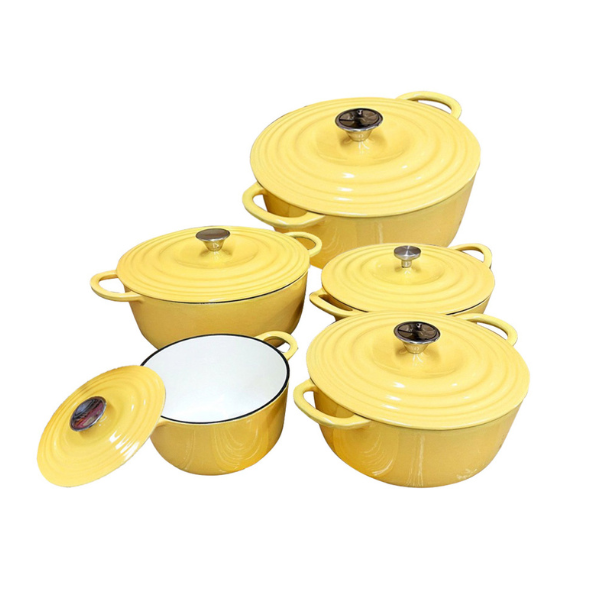
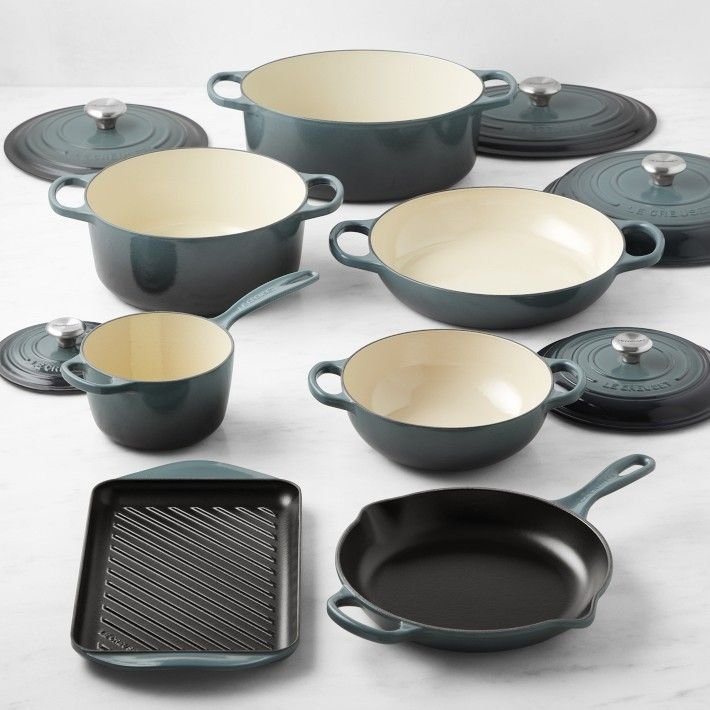
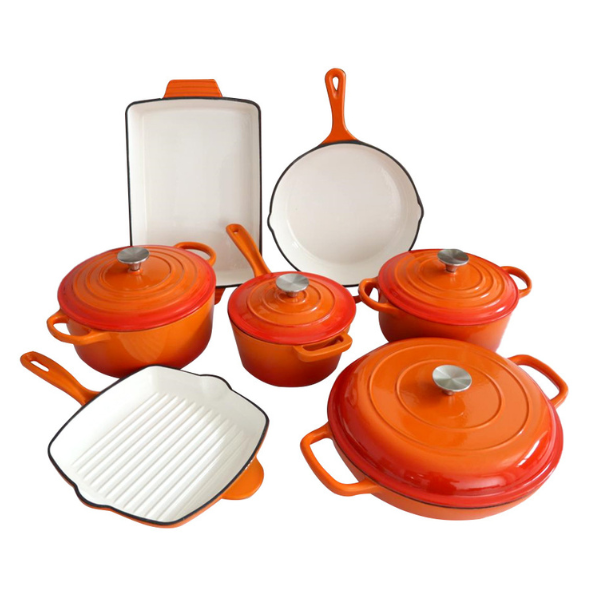
Quality Assessment: Ensuring Durability and Safety in Bulk Purchases
For retailers sourcing enameled cast iron wholesale, quality assessment is not just about aesthetics—it’s about ensuring customer satisfaction and brand reputation. When purchasing these kitchen staples in bulk, understanding the critical quality markers can mean the difference between profitable inventory and costly returns.
“Effective quality assessment of enameled cast iron cookware requires systematic evaluation of both visible characteristics and certified safety standards to ensure products meet consumer expectations and regulatory requirements.”
Essential Quality Markers: Enamel Thickness, Chip Resistance, and Heat Distribution
The foundation of high-quality enameled cast iron for retail begins with proper construction. Premium pieces feature consistent enamel application—typically 3-4 layers—creating a durable cooking surface that resists chipping and crazing. When examining samples, check for uniform color without bubbles or pinholes, which indicate potential future failure points.
Weight distribution serves as another reliable quality indicator. Well-crafted pieces feel balanced even when empty, with walls and bases of consistent thickness (typically 4-5mm for Dutch ovens). This uniform construction ensures even heat distribution, preventing hot spots that can ruin delicate dishes or burn food.
Lid fit represents a commonly overlooked but crucial quality feature. A proper “rock-solid” seal should trap moisture efficiently without excessive rocking or gaps when sitting on the pot. This detail significantly affects cooking performance and customer satisfaction.
Safety Certifications: Navigating FDA, LFGB, and Lead-Free Requirements
When sourcing enameled cast iron cookware bulk orders, safety certifications provide non-negotiable quality assurance. Reputable manufacturers willingly supply documentation showing compliance with both FDA standards (for US markets) and LFGB certification (the stricter European equivalent).
| Certification Type | Testing Authority | Materials Tested | Frequency Required | Key Compliance Markers |
|---|---|---|---|---|
| FDA Compliance | Third-party Labs | Enamel, Handle Materials | Annual Certification | Lead/Cadmium Limits, Food Contact Safety |
| LFGB (German Standard) | TÜV, SGS | All Materials, Packaging | Bi-annual Testing | Stricter Heavy Metals Limits |
| ISO 9001 | ISO-Accredited Auditors | Manufacturing Process | 3-Year Certification Cycle | Quality Management Systems |
| Prop 65 (California) | State-Recognized Labs | All Components | Per Product Line | Chemical Exposure Warnings |
| RoHS Compliance | European Testing Labs | Metal Components | Per Manufacturing Batch | Restricted Substance Limits |
Conducting Effective Sample Testing Before Large Orders
Before committing to wholesale cast iron cookware purchases, thorough sample testing is essential. Request multiple samples from different production batches rather than hand-selected “perfect” specimens. This approach reveals consistency across manufacturing runs, particularly important when working with newer suppliers.
Effective testing should simulate real-world usage: subject samples to temperature extremes (from freezer to oven), test acidic food reactions, and evaluate cleaning requirements. Manufacturers using advanced DISA line technology, like MEILOZ, typically demonstrate more consistent results across samples due to automated quality control.
Common Quality Compromises in Lower-Priced Wholesale Options
Budget-friendly enameled cast iron wholesale options often make specific quality compromises to achieve lower price points. Common issues include thinner enamel application (1-2 layers instead of 3-4), lower-grade pigments that fade with use, and rougher interior surfaces that affect food release properties.
While these compromises don’t necessarily make products unusable, they directly impact customer satisfaction and return rates. Retailers must balance acquisition costs against potential customer service expenses and reputation impacts when selecting their inventory partners.
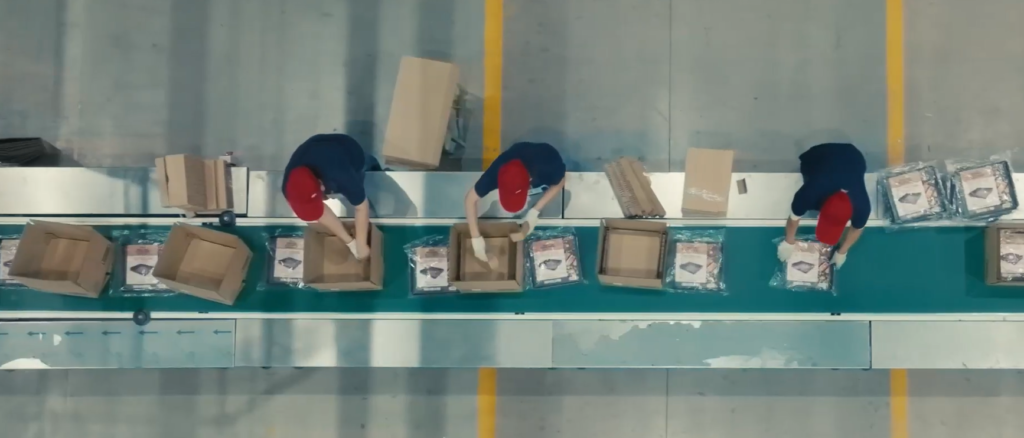
Create Unique Cookware That Stands Out
Meiloz offers high-quality enameled cast iron cookware perfect for your retail or commercial needs. Customize sizes, colors, and logos to reflect your brand while delivering durability and performance that your customers trust.

Negotiating Favorable Terms: MOQs, Pricing Tiers, and Customization Options
Securing the right terms when ordering enameled cast iron wholesale can significantly impact a retailer’s profitability. From minimum order quantities to customization options, effective negotiation strategies help balance quality, cost, and inventory management concerns for businesses of all sizes.
“Successful enameled cast iron sourcing requires strategic negotiation of minimum orders, pricing tiers, and customization options that align with your business model and customer expectations.”
Balancing MOQs with Inventory Risk: Strategies for Different Business Sizes
Minimum order quantities (MOQs) present different challenges depending on your retail operation’s size. Small retailers often struggle with standard industry MOQs of 1,000+ units, which can represent significant capital investment and inventory risk. Emerging suppliers like MEILOZ offer more flexible entry points with MOQs starting at 500 pieces—a more manageable threshold for smaller operations.
For medium-sized retailers, negotiation should focus on MOQ flexibility across different product types. Consider mixing product categories (Dutch ovens, skillets, etc.) to reach minimum thresholds while maintaining inventory diversity. Larger retailers can leverage volume commitments across extended timeframes to secure preferential terms while minimizing warehouse constraints.
Understanding Tiered Pricing Structures: Volume Thresholds and Margin Impacts
| Order Volume (Units) | Typical Discount Range | Per-Unit Price Impact | Retailer Margin Increase | Inventory Holding Cost |
|---|---|---|---|---|
| 100-499 (Sample/Test) | 0-15% | $22-26/unit | 25-30% | Low ($2,200-$13,000) |
| 500-999 (Starter) | 25-30% | $18-22/unit | 30-35% | Medium ($9,000-$22,000) |
| 1,000-2,499 (Standard) | 30-40% | $15-18/unit | 35-40% | High ($15,000-$45,000) |
| 2,500-4,999 (Volume) | 40-45% | $13-15/unit | 40-45% | Very High ($32,500-$75,000) |
| 5,000+ (Enterprise) | 45-55% | $11-13/unit | 45-50% | Extensive ($55,000+) |
When negotiating with affordable enameled cast iron suppliers, understanding the relationship between order volume and pricing tiers is essential. Most manufacturers offer substantial discounts at specific thresholds—typically starting at 25-30% for 500+ units and increasing to 40%+ for orders exceeding 1,000 pieces. These discount structures significantly impact your retail margins and competitive positioning.
Savvy retailers leverage these thresholds by “bundling” orders across multiple product lines or combining orders with complementary businesses to reach higher discount tiers without exceeding individual inventory needs. This approach requires coordination but can yield 10-15% additional margin when executed effectively.
Customization Options That Drive Retail Differentiation: Colors, Packaging, and Features
Product differentiation often determines retail success in competitive markets. When engaged in cast iron cookware sourcing, prioritize suppliers offering customization options in three key areas: color selection beyond standard options, packaging personalization for gift-worthiness, and feature modifications like handle designs or lid configurations.
Custom color options typically require higher MOQs (often 1,000+ units per color) but create unique selling propositions that competitors cannot easily match. Packaging customization generally has lower minimums and offers excellent brand-building opportunities with relatively modest investment increases (typically 5-10% per unit).
Negotiating Sample Orders, Payment Terms, and Production Timelines
Before committing to large orders, negotiate comprehensive sample arrangements to buy enameled cast iron in small quantities for testing. Quality suppliers should offer sample programs with units at or near actual production quality rather than hand-selected perfect specimens.
Payment terms significantly impact cash flow—standard industry terms typically require 30% deposits with 70% due before shipping. Established buyers should negotiate extended terms (net-30 or net-60) for at least a portion of the balance. Production timelines vary seasonally, with industry standards ranging from 30-45 days for repeat orders to 60-90 days for new designs or custom colors.
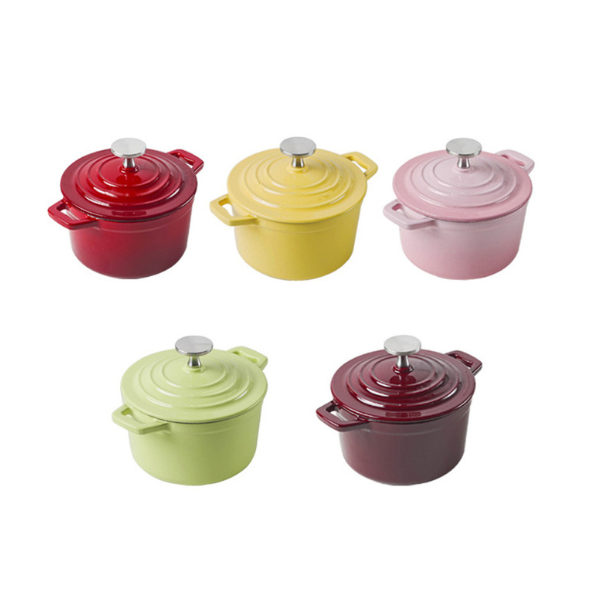

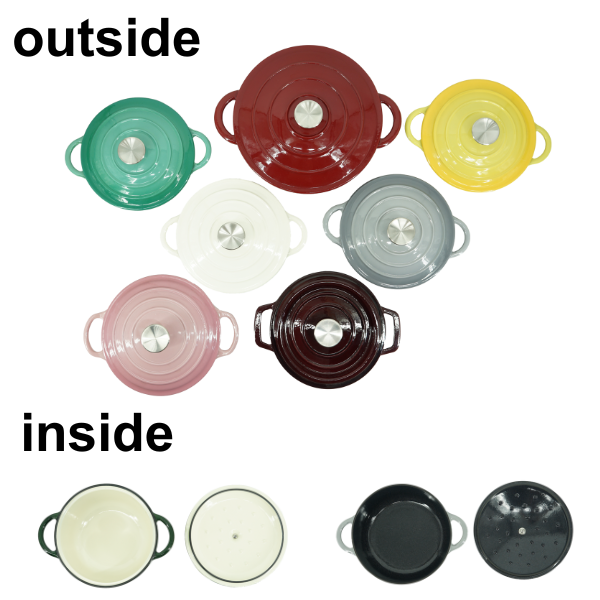
Supply Chain Logistics and Total Cost Calculation
When sourcing enameled cast iron wholesale, understanding the complete supply chain logistics is essential for accurate cost projection and profitability planning. Many retailers focus exclusively on unit pricing while overlooking significant logistical expenses that can dramatically impact the true cost of inventory.
“Successful enameled cast iron wholesale procurement requires a comprehensive understanding of shipping logistics, import regulations, and warehousing requirements to calculate accurate total landed costs beyond the initial unit price.”
FOB vs. CIF Pricing Models: Implications for Total Landed Cost
The pricing model selected fundamentally affects your overall expense structure and risk allocation. Free On Board (FOB) pricing transfers ownership at the port of origin, making the buyer responsible for international shipping, insurance, and associated risks. Cost, Insurance, and Freight (CIF) pricing includes these elements in the supplier’s quote, potentially simplifying logistics but often at premium rates.
For cast iron cookware resale businesses, FOB often proves more cost-effective for larger orders (10+ pallets) where volume justifies dedicated logistics management. CIF typically benefits smaller retailers with limited import experience but can increase per-unit costs by 8-15% compared to well-managed FOB arrangements.
| Cost Component | FOB Model | CIF Model | Average Impact ($/unit) | Risk Owner |
|---|---|---|---|---|
| Base Product Cost | 100% | 110-115% | $2-5 higher in CIF | Supplier (both models) |
| Ocean Freight | Retailer Arranges | Included | $1.50-3.00 | Varies by model |
| Insurance | Retailer Responsibility | Included (Basic) | $0.25-0.75 | Varies by model |
| Customs Brokerage | Retailer Arranges | Retailer Arranges | $0.50-1.00 | Retailer (both models) |
| Demurrage/Detention Risk | High (Retailer) | Medium (Shared) | Variable | Primarily retailer |
Import Duties, Tariffs, and Regulatory Compliance for Cookware
Enameled cast iron wholesale shipping logistics involve navigating complex import regulations that vary by destination country. Current U.S. tariffs for Chinese-manufactured cast iron range from 7.5-25% depending on specific HS codes and ongoing trade policy adjustments. European markets typically apply 1.7-5% duties plus VAT (varies by country).
Regulatory compliance adds another layer of consideration. FDA requirements for food-contact surfaces, California Proposition 65 compliance for U.S. sales, and country-specific packaging regulations all affect both timeline and costs. Working with suppliers that maintain updated certification documentation (like MEILOZ) can streamline this process significantly.
Shipping Logistics: Container Options, Palletization, and Weight Considerations
Cast iron’s substantial weight creates unique shipping challenges. A standard 20-foot container can accommodate approximately 800-1,000 Dutch ovens (depending on size) before reaching weight limits—well below volume capacity. This “heavyweight” characteristic makes efficient palletization crucial for cost management.
Most suppliers offer two primary shipping configurations: individual retail-ready boxes or master cartons containing multiple units. The master carton approach reduces per-unit packaging costs but requires additional handling upon arrival. Palletization patterns significantly impact freight costs, with optimized loading potentially saving 10-15% on shipping expenses.
Warehousing Strategies: Just-in-Time vs. Bulk Storage Cost Analysis
Warehousing represents a substantial often-overlooked expense in the wholesale enameled cast iron supply chain. Cast iron’s weight requires reinforced shelving and limits stacking height, increasing storage costs compared to lighter cookware. Current industry warehousing averages range from $12-18 per square foot monthly in major U.S. distribution hubs.
Just-in-time inventory models minimize warehousing expenses but require precise demand forecasting and reliable supplier production timelines. MEILOZ’s 35-55 day standard production timeline (from order to shipment) aligns with industry averages but requires careful planning to prevent stockouts. Bulk storage models increase carrying costs but provide buffer against supply chain disruptions and typically secure deeper wholesale discounts.
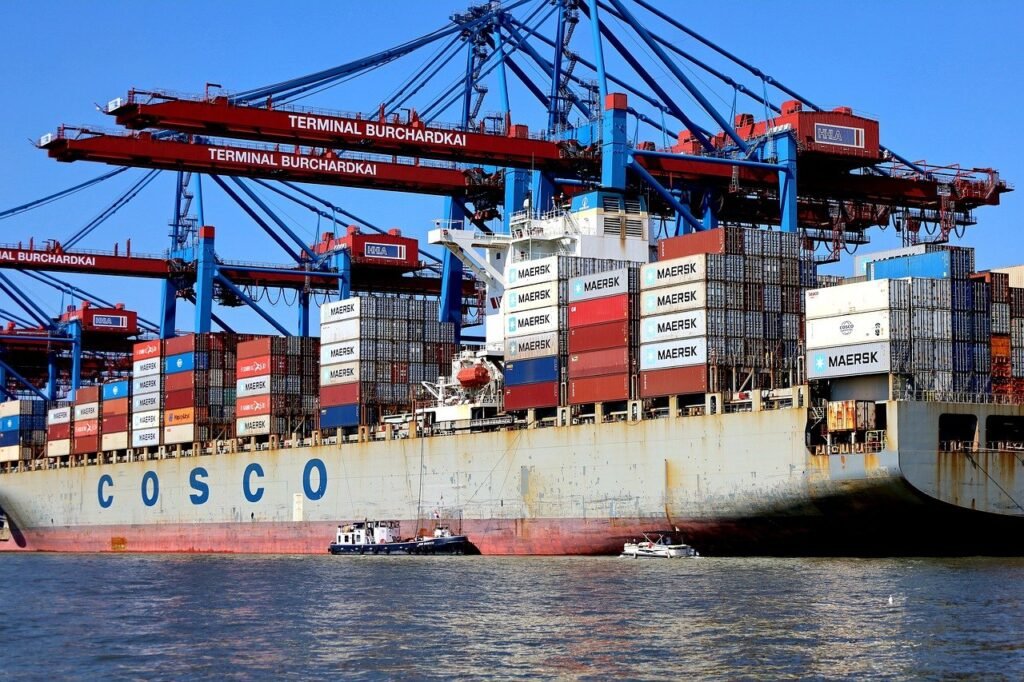

Building Long-Term Supplier Relationships for Inventory Flexibility
In the competitive world of retail, finding reliable enameled cast iron suppliers is just the beginning. Cultivating strategic partnerships with these manufacturers can transform basic vendor relationships into valuable business assets that provide flexibility, preferential treatment, and competitive advantages unavailable to one-time purchasers.
“Long-term supplier relationships in the enameled cast iron wholesale market create mutual benefits through improved communication, preferential production scheduling, and collaborative product development that address retailers’ changing inventory needs.”
From First Order to Preferred Client: Communication Practices That Build Trust
Establishing yourself as a preferred client begins with your first interaction. Professional buyers know that consistent, clear communication creates the foundation for productive partnerships. Start by providing detailed specifications and realistic timelines rather than vague requests with urgent deadlines. This demonstrates your business professionalism and makes you a “dream client” from the supplier’s perspective.
Successful retailers establish regular communication cadences—monthly check-ins for inventory planning and quarterly strategy discussions for longer-term forecasting. This consistent contact keeps your business top-of-mind with wholesale cast iron cookware manufacturers, particularly during peak production seasons when capacity becomes limited.
| Relationship Stage | Communication Frequency | Information Sharing Level | Typical Benefits | Relationship Investment |
|---|---|---|---|---|
| Initial Contact | Weekly during sampling | Basic specifications | Standard pricing | Low (product inquiry) |
| First Order (0-6 months) | Bi-weekly updates | Order requirements | On-time delivery focus | Medium (order commitment) |
| Regular Client (6-18 months) | Monthly planning calls | Sales forecasts | Priority production slots | Medium-high (consistent orders) |
| Strategic Partner (18+ months) | Quarterly strategy meetings | Market trends & plans | Custom development, rush accommodation | High (mutual planning) |
| Preferred Partner (3+ years) | Embedded planning systems | Shared sales data | Exclusive colorways, preferential pricing | Very high (integrated operations) |
Seasonal Planning and Forecasting with Supplier Collaboration
The best place to buy enameled cast iron wholesale isn’t necessarily the supplier with the lowest price, but the one willing to collaborate on seasonal planning. Experienced retailers share 6-12 month forecasts with key suppliers, allowing manufacturers like MEILOZ to align production capacity with anticipated demand spikes (typically 60-90 days in advance of holiday seasons).
This collaborative approach benefits both parties—retailers secure production capacity during high-demand periods while manufacturers optimize their production scheduling. This partnership approach often unlocks preferential treatment unavailable to transactional buyers, including capacity reservation during peak seasons when many suppliers are fully booked.
Managing Rush Orders and Production Schedule Adjustments
Even with careful planning, retail sometimes requires rapid inventory adjustments. Established supplier relationships provide significant advantages when emergency orders become necessary. While enameled cast iron wholesale production typically requires 35-60 days lead time, trusted partners often receive priority scheduling—reducing turnaround by 15-20% during critical periods.
Successful retailers establish contingency agreements with suppliers in advance, creating clear protocols for rush production requests. These arrangements typically include understanding of associated premium costs (usually 10-20% above standard pricing) and minimum volume requirements to justify production line adjustments.
Creating Exclusive Product Lines Through Collaborative Development
The ultimate benefit of strong supplier relationships is collaborative product development. After establishing trust through consistent ordering, retailers can work with manufacturers to create exclusive products unavailable to competitors. These collaborations typically begin with custom colorways before progressing to unique feature modifications.
MEILOZ and similar specialized enameled cast iron suppliers offer collaborative development programs for established clients, providing technical guidance on feasible customizations while retailers contribute market insights on consumer preferences. This symbiotic relationship creates differentiated product offerings that enhance retail margins and build brand identity.
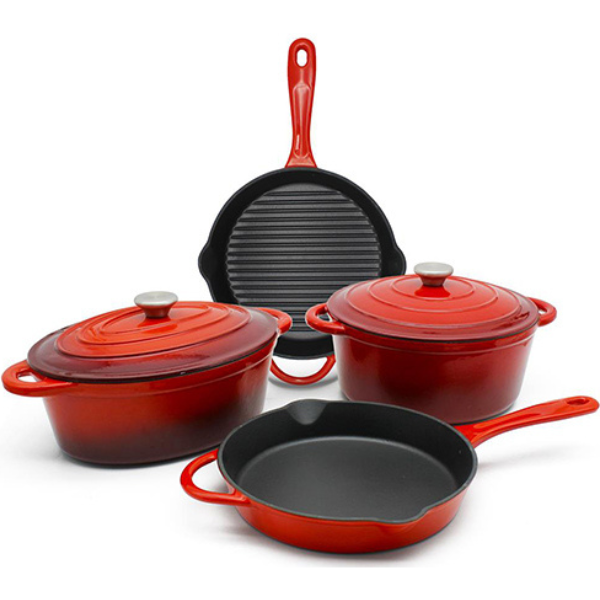
Conclusion
After a decade in the kitchenware game, I’ve learned one thing: sourcing enameled cast iron isn’t just about finding a supplier—it’s about finding the right partner. Quality, flexibility, and smart negotiations can make or break your retail success.
For me, it’s clear that balancing durability with cost is what sets the best apart. Whether it’s nailing down MOQs or ensuring every piece meets safety standards, I’ve seen how the right choices protect your margins and keep customers happy.
Building a solid supply chain is a **”ride-or-die”** move for any retailer. So, if you’re ready to elevate your cookware game, start with a supplier who gets your vision—because in this market, it’s all about long-term wins.
Create Unique Cookware That Stands Out
Meiloz offers high-quality enameled cast iron cookware perfect for your retail or commercial needs. Customize sizes, colors, and logos to reflect your brand while delivering durability and performance that your customers trust.

FAQ
Q1: What factors should I consider when buying enameled cast iron wholesale?
A1: When purchasing enameled cast iron wholesale, consider the minimum order quantity (MOQ), pricing, customization options, durability, and the supplier’s reputation. Ensuring product quality and having flexible terms to support your retail needs is crucial.
Q2: How do I find reliable enameled cast iron suppliers?
A2: Finding reliable suppliers involves researching reviews, verifying credentials, and seeking referrals from industry contacts. Attending trade shows and networking within cookware industry circles can also help identify trustworthy suppliers.
Q3: What are the benefits of enameled cast iron compared to other materials?
A3: Enameled cast iron offers benefits such as excellent heat retention and distribution, resistance to rust and acidity, usability on various heat sources (including induction), and it doesn’t require seasoning like traditional cast iron.
Q4: Can I customize enameled cast iron cookware for my retail brand?
A4: Yes, many manufacturers offer customization options including color, branding, and design to cater to your retail brand’s concept and consumer preferences.
Q5: What is the difference between enameled and non-enameled cast iron?
A5: Enameled cast iron features a vitreous enamel coating that prevents rust and allows for easier cleaning, whereas non-enameled cast iron requires regular seasoning to maintain its non-stick layer and prevent rust.
Q6: Is enameled cast iron cookware safe for all types of cooktops?
A6: Yes, enameled cast iron cookware is generally safe for all cooktops, including induction, electric, and gas stoves. However, it is always advised to check manufacturer guidelines.
Q7: What are common considerations for importing enameled cast iron cookware?
A7: Key considerations include understanding international shipping regulations, customs duties, the supplier’s compliance with safety standards, and ensuring adequate insurance for transportation.
Q8: How can retailers ensure product quality in enameled cast iron cookware?
A8: Retailers should source products from reputable manufacturers, ask for certifications of quality, conduct third-party inspections, and possibly test sample products to ensure the cookware meets desired standards.
External Links
- What Is Enameled Cast Iron – A Definitive Guide – LeeKnives
- STAUB Le Grande 7.4-Quart Cast Iron Dutch Oven – Costco Wholesale
- Wholesale Enamel Cast Iron Cookware Cooking Pot Casserole Set Wholesale – Alibaba
- Sur La Table Millau 5.5 qt. Enamel Cast Iron – BJ’s Wholesale Club
- Valor Cast Iron Cookware – WebstaurantStore
- Enameled Cast Iron – Made In Cookware
- Cast Iron Cookware Made in the USA: Authentic American-Made Brands
